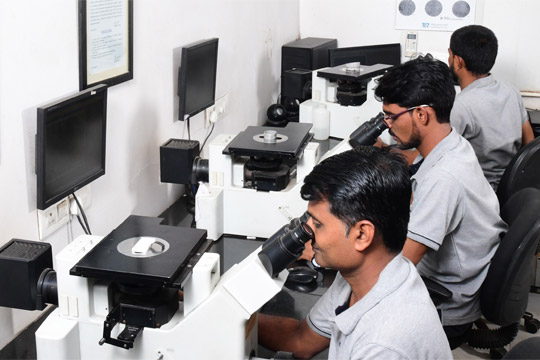Metallography is the study of the physical structure and components of metals, typically using microscopy. The surface of a metallographic specimen is prepared by various methods of grinding, polishing and etching. After preparation, it is often analyzed using optical or electron microscopy.
Using only metallographic techniques, a skilled technician can identify alloys and predict material properties. After polishing, certain microstructural constituents can be seen with the microscope, e.g., inclusion and nitrides. If the crystal structure is non-cubic (e.g., a metal with a hexagonal-closed packed crystal structure, such as Ti. or Zr.) the microstructure can be revealed without etching using crossed polarized light (light microscopy). Otherwise, using a suitable chemical or electrolytic etchant reveals the microstructural constituents of the specimen.

Training session topics
- Overview of Metallography.
- Basics of Metallurgy & microstructural examination.
- Tool Steel Quality Control through Microstructural Studies
- Application of Metallography for quality control & Failure Investigation.
- Sample Preparation
- Failure Analysis & Metallography
Key Benefits:
- Practical understanding of the physical structure and components of metals
- Insights on techniques of Metallography
- Insights on sample preparation methods
- Quantification of microstructure such as grain size, inclusion rating and case depth measurement